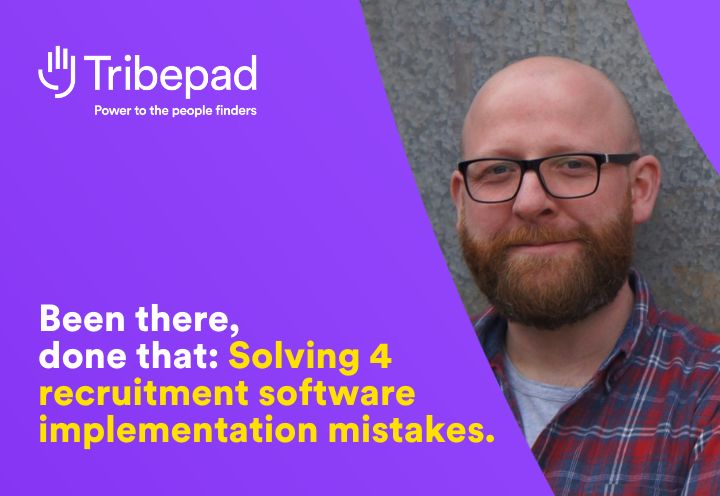The pandemic has proved that agility is today’s most important business capability – and non-traditional workers are instrumental to that. (That is, freelancers, contractors, locums, and temps.)
As PwC outline, organisations can only compete by “maximising flexibility while minimising fixed costs […] embracing the rise of the portfolio career, hiring a diverse mix of people on an affordable, ad-hoc basis”.
The problem is, it’s getting harder and harder to secure the right people at the right time and cost… and most organisations simply aren’t equipped to address the issue, because their people processes are only optimised for salaried employees.
For years, there’s been a heavy focus on becoming an employer of choice for permanent workers, with tactics to make attracting, engaging, and retaining employees easier – but the focus to become an employer of choice for freelancers has fallen through the cracks.
It’s time for that to change.
Here are 7 things freelancers and contractors typically want from organisations like yours. So you can hone your employer value proposition and give yourself an edge in the war for non-traditional talent.
1 – Minimal bureaucracy
When it comes to red tape and clunky processes, traditional employees might have to ‘like it or lump it’ – but freelancers can vote with their feet. Evaluate and simplify processes your non-traditional workers have to engage with.
For example, do you really need them to use time-tracking software, or could you trust them to submit their hours? Do you need to request references for the 10000th time? How much back-and-forth goes into submitting an invoice?
2 – Clear and appropriate expectations
When working with freelancers and contractors, “it’s good practice to draft a statement that details exactly what you need and when”, Harvard Business Review say. That’s the clear. “Freelancers aren’t around all the time [so] you have to spend extra time talking about what the goal is, how it connects to the big picture, and why it matters.”
The appropriate refers to setting a manageable, reasonable workload. We’re all aware of the burnout epidemic as it impacts permanent employees, but freelancers and contractors are susceptible too. Safeguard their wellbeing to protect a valuable talent stream for years to come.
3 – Fulfilling work
Of course, you don’t have the same obligation to freelancers to provide interesting, fulfilling work as you do permanent employees. If gig workers don’t like the gig, they don’t have to accept it.
But that said, feeling your work matters is a huge driver of engagement – and you do want your freelancers to feel engaged, motivated and committed (even if only for one shift or one project).
Two minor actions from your side can make a big difference: giving context and showing results. Tell your freelancers how their work relates to the whole, so they know why they’re doing what they’re doing. Then share any positive feedback or successes with them, as part of the team who contributed.
4 – Being treated with respect
If you’ve ever spent time chatting to freelancers or contractors, their stories can be horrendous.
- Invoices that’re weeks and weeks overdue
- Endless quibbling over already-low rates
- Perpetual back and forth sending the same info to different people
- Jobs confirmed then pulled with an hour’s notice (and no apology)
- No confirmation or onboarding info, like dress code and location
- Standing outside for hours with missing door codes
- No thanks or recognition for a job well done
Read more: Is this forgotten factor hurting your candidate experience and flexible workforce
None of those are difficult issues to fix. It’s about treating freelancers and contractors with a little respect, so they feel confident and valued. Ultimately so they do a better job – this gig and the next.
5 – A fair, inclusive culture
ED&I is on every business leader’s agenda right now, with every people process coming under scrutiny. Your processes for recruiting and managing non-traditional workers shouldn’t be an exception.
If you’re asking whether your recruitment is fair and inclusive, for example, can you say the same of contractor recruitment? Or does overreliance on agencies and rogue hiring manager behaviour mean you lack control and visibility to drive change?
6 – Loyalty
Relying on more flexible workers doesn’t mean an ever-revolving door of new people. At its best, it means building long-term, trusted relationships with people who consistently do an awesome job. It means maintaining continuity for customers and your permanent team, without sacrificing flexibility.
But loyalty runs both ways. From contractors and freelancers’ perspective, organisations with systematic processes for working with contractors are more likely to need reliable, regular support.
They’ll typically look for clients who approach them proactively with opportunities – ideally based around their availability so they’re not bombarded with endless unsuitable work requests.
7 – Being treated as part of the team
For many organisations, non-traditional workers are a commodity and the relationship is purely transactional. That’s an ethos that really needs to change, if you want to become an employer of choice for freelancers and contractors.
Harvard Business Review suggests you “avoid all the subtle status differentiators that can make contractors feel like second-class citizens—for example, the colour of their ID badges or access to the corporate gym—and be exceedingly inclusive instead. Invite them to important meetings, bring them into water-cooler conversations, and add them to the team email list.”
Integrating your contractors into your culture better doesn’t mean falling foul of compliance requirements. IR35, for example, was introduced to prevent “disguised employees” taking advantage of tax breaks. A freelancer working off-site on their own equipment with fifteen other regular clients isn’t a disguised employee, even if you invite them to your Christmas party.
Your modernisation opportunity
Non-traditional talent makes up a bigger proportion of global workforces today than any point in history. In some industries, flexible workers are nearly as numerous as traditional salaried employees. And by 2030, PwC even predict permanent workers could drop to only 9% of the workforce. The truth is, our workforces have changed – but the people processes designed to grow, engage, and retain those workforces haven’t.
Organisations that act now to modernise their processes for flexible workers stand to gain massive competitive advantage, cementing their profile with the workforce of tomorrow and positioning the business for growth.






